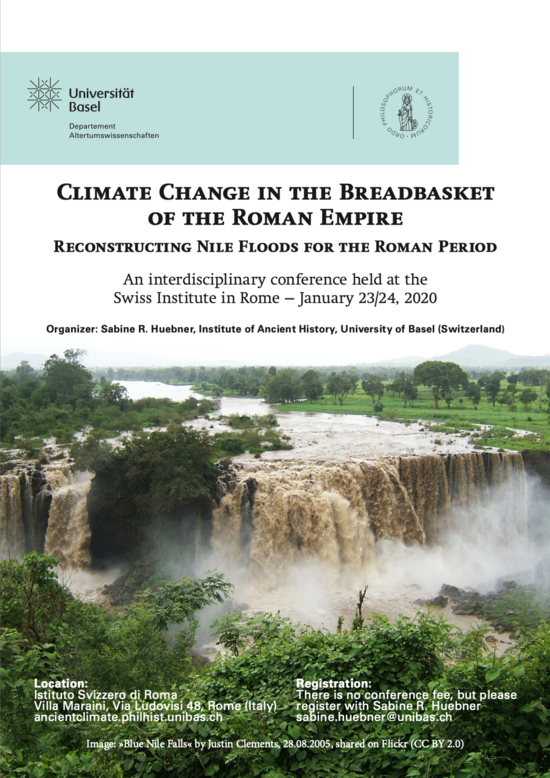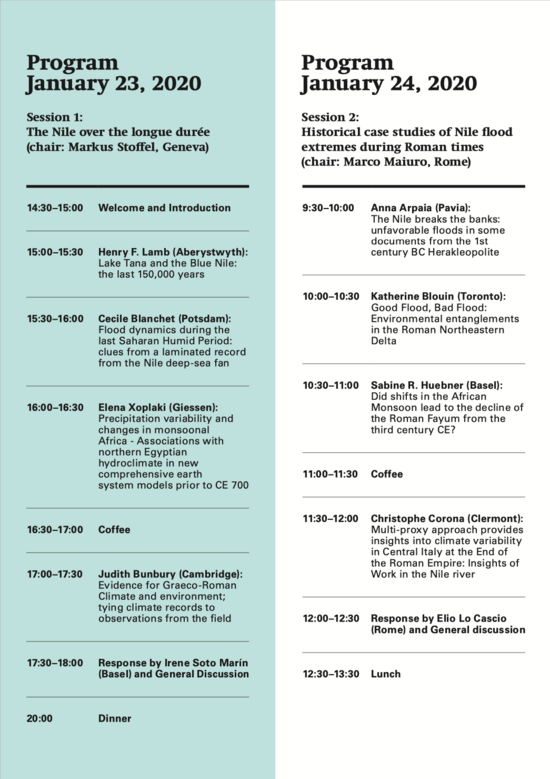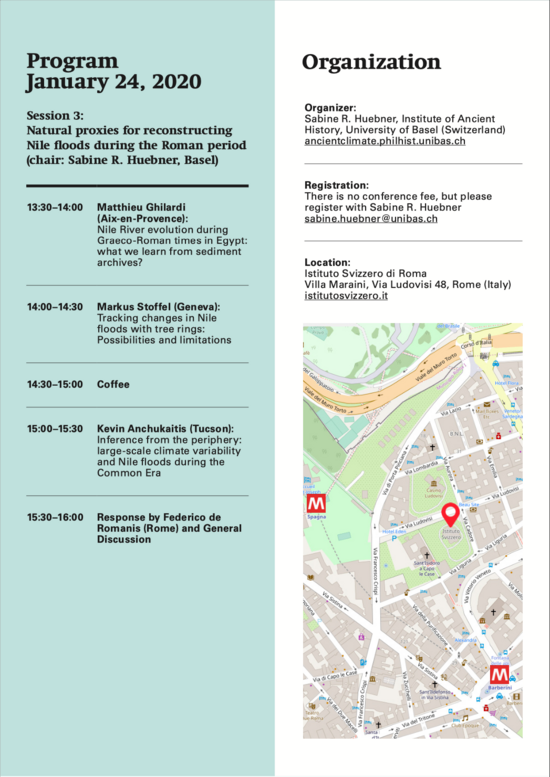
International Conference | 23–24 January 2020Climate Change in the Breadbasket of the Roman Empire: Reconstructing Nile Floods for the Roman Period
The importance of the Nile for Egypt’s agriculture, society, culture and political history can hardly be overrated. Since rainfall is almost non-existent in Middle and Upper Egypt, any changes in the annual Nile flood must have triggered an immediate response in Egyptian society, economy and politics. Moreover, the Nile river and its fertile flood plains did not only play a crucial role in the development of Egyptian civilization, but they also constituted one of the main pillars for the economic stability of the Roman Empire and helped to sustain its imperial expansion. The grain supply of the city of Rome and the Roman army was closely tied to the annual cycle of the Egyptian river. Reconstructing annual changes in the quality of the flood of the Nile is thus important not only for studying the immediately adjacent Egyptian society, but it also has implications of a larger scale, for a series of below-average Nile floods must have had serious political and socio-economic consequences for the entire Roman Empire.
Until now, ancient historians studying the society and economy of Roman Egypt have hardly paid any attention to the flood quality in any given year. Moreover, our literary, epigraphic and papyrological sources offer only sparse evidence for exceptional years: the earliest consecutive records of Nile flood levels start in the 7th century CE, recorded by the Islamic Nilometer in Cairo.
With new advances in the field of paleoclimatology, which offers an entirely new array of sources to ancient historians, there is hope that we will be able to reconstruct Nile flood data for the Graeco-Roman period, and develop collaborative methods of assessing the impact of climatic variability or change on ancient societies without oversimplifying their causal connections. At this conference we aim to discuss both human and natural proxy data in order to reconstruct summer Nile flooding during the Roman period from 30 BCE to roughly 700 CE.



